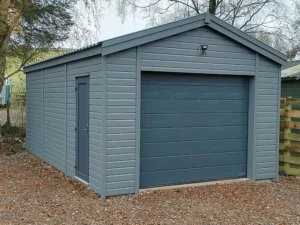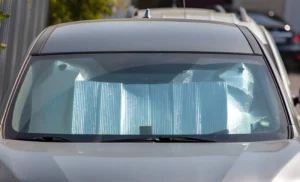Pink used to mean one thing—nurseries, playrooms, maybe a teen girl’s bedroom. Not anymore.
Today’s interiors use pink wallpaper in bold, elevated ways. From soft blush to deep rose, pink has become a design staple. Not juvenile. Not cheesy. Just warm, modern, and confident.
If you’re looking to add color without going overboard, pink is the move. Let’s break down exactly how to use pink wallpaper like a pro—no glitter or unicorns required.
Why Pink Works in Grown-Up Spaces
It’s not about Barbie pink. It’s about range.
Pink adds warmth without overwhelming a space.
It feels fresh. It softens hard edges. It works with almost any neutral—white, beige, charcoal, wood, brass, or even black.
Pink wallpaper creates a feeling.
Blush tones feel airy. Coral feels energetic. Dusty rose adds depth. You can use it to calm a room down or to energize a corner. It’s flexible.
It also flatters every type of light.
Cool morning light? Pink warms it up. Harsh overheads? Pink diffuses them.
Where to Use Pink Wallpaper (And How to Get It Right)
There are five rooms where pink wallpaper works especially well. Here’s how to pull it off.
1. Primary Bedroom
Yes—your own bedroom. Not your kid’s.
Use soft pinks with texture or subtle pattern. Think brush strokes, ombré fades, or watercolor effects. Avoid anything cartoonish or floral unless it’s abstract.
Pair it with clean white bedding, light wood furniture, and matte brass hardware. Add layers—linen curtains, a sheepskin rug, ceramic lamps.
Now you’ve created a space that feels like a boutique hotel.
2. Powder Room
This room is made for risk. It’s small. It’s private. It’s the perfect spot to play.
Try bold pink wallpaper here. Go deep. Go dramatic. Think high-gloss fuchsia, pink marble, or a wild graphic pattern.
Balance it with dark fixtures and a sleek mirror. No one expects it—and that’s the point.
3. Dining Room
Yes, pink in a dining room. It adds energy without being loud.
Use a medium-toned pink wallpaper with structure, like chevrons, art deco lines, or architectural shapes. Keep furniture neutral: oak table, white or black chairs, brass or ceramic light fixture.
This combo feels curated. Not cute.
4. Home Office
Skip the gray. You sit in this room for hours—you need something uplifting.
Choose a muted pink wallpaper. Try textured linen patterns, thin geometric lines, or soft palm silhouettes. Keep your desk minimal. Let the wall do the heavy lifting.
Bonus: Pink looks great on Zoom.
5. Entryway or Hall
These spaces are often overlooked. Pink wallpaper gives them life.
Pick a tone that works with the rest of your home. If you have a neutral palette, blush or rose works well. If your house leans bold, try a punchy salmon or poppy pink.
Keep the décor tight. One mirror. One table. One vase. The wallpaper should be the main character.
What Styles of Pink Wallpaper Work Best?
Not all pinks are created equal. Let’s break down a few winning looks.
1. Blush and Beige Mix
Looks soft. Feels expensive.
This color blend works best in bedrooms and living rooms. Look for patterns that mimic fabric—like faux silk, linen, or velvet texture. It pairs perfectly with cream, light gray, and oak finishes.
2. Bold Graphics in Fuchsia or Coral
Not subtle. And that’s the point.
Use it in one space only—an accent wall, powder room, or the back of a bookcase. Let it bring the drama. Offset it with black, white, or chrome finishes.
3. Pink Marble or Stone Effect
Very now. Very editorial.
These prints give you the luxury look of natural stone with the softness of pink. Use them in high-impact spaces like dining rooms or behind a vanity.
4. Botanical Patterns
Not the ones you’d find in grandma’s sunroom. Think palm fronds, banana leaves, or abstract florals in soft pink tones. Use these in transitional spaces like a hallway or mudroom. They keep things light and bright.
5. Tone-on-Tone Pink Lines
Minimal and modern.
Try fine lines in a darker pink over a blush base. These patterns are subtle but elegant. Great for home offices, reading nooks, or bedrooms.
How to Style Around Pink Wallpaper
It’s easy to go wrong here. You need balance. Here’s what works.
Keep furniture clean and neutral.
Don’t compete with the wallpaper. White, cream, light gray, black, and natural wood are safe bets.
Use soft lighting.
Pink looks best under warm light. Use table lamps, sconces, or pendant lighting with a soft white or gold bulb.
Limit your color palette.
Three colors max: pink, a neutral, and one accent (like green, navy, or brass).
Bring in natural textures.
Rattan, linen, matte ceramic, travertine. These help ground the color and keep it from feeling too sweet.
Avoid too much pink elsewhere.
Don’t match your furniture to your wallpaper. That gets cloying fast. Let the wall do the work.
Pink in Unexpected Places
You don’t have to do a full wall. Try these mini installs to bring pink into your home without the commitment.
- Inside a closet – Make opening the door feel special.
- Back of a bookshelf – Add color and depth without clutter.
- Behind open shelving in a kitchen – Pink looks amazing with brass and white dishes.
- Inside a bar nook or coffee station – Unexpected, fun, and stylish.
- Framed like art – Buy a sample, frame it, and hang it as its own piece.
Peel-and-Stick vs Traditional Wallpaper
Peel-and-stick pink wallpaper is ideal for renters.
Easy to apply. Easy to remove. No damage. Perfect for apartments or commitment-shy decorators.
Traditional wallpaper feels more permanent.
Use this if you want texture, a high-end finish, or plan to keep the look for a while. Hire a pro or make sure you prep your wall correctly.
Either option comes in modern, grown-up designs. This isn’t kid stuff anymore.
Final Thoughts
Pink is powerful.
It adds emotion. It changes the light. It feels fresh, warm, and modern all at once. Pink wallpaper gives your space a story. A point of view. A vibe.
Don’t play it safe.
Try it in one space. A wall. A nook. A powder room. Keep the rest simple. Let the color lead.
The result? A space that feels more like you.
And that’s the point of design, right?
Also Read-Selecting the Right Tech Stack for Mobile App Success










